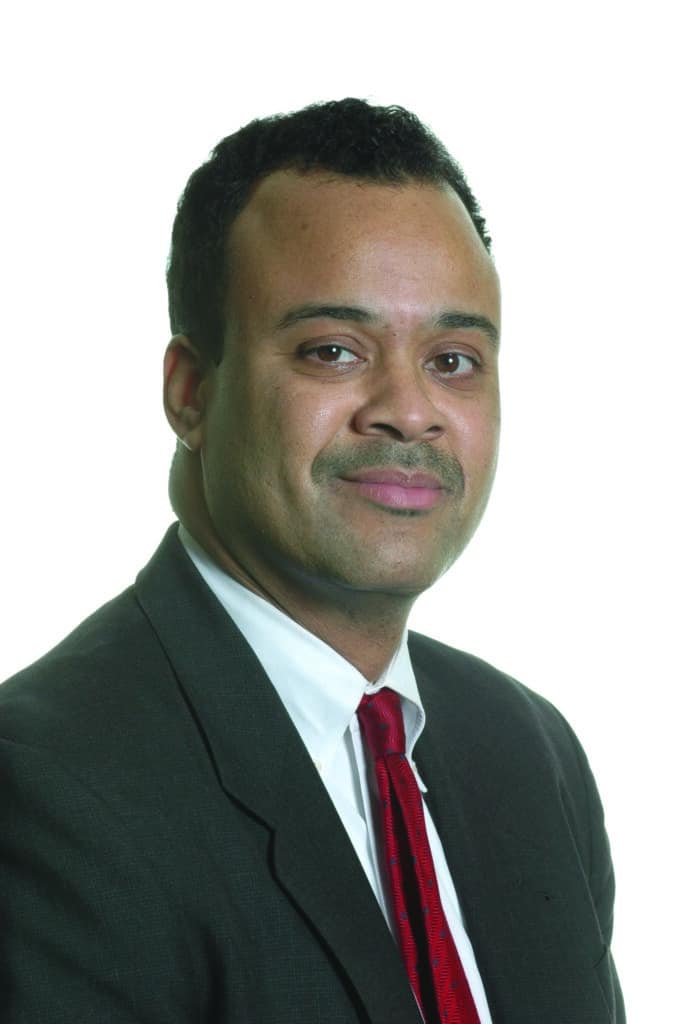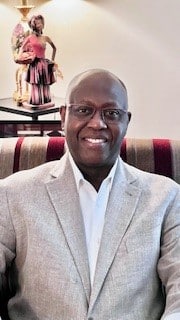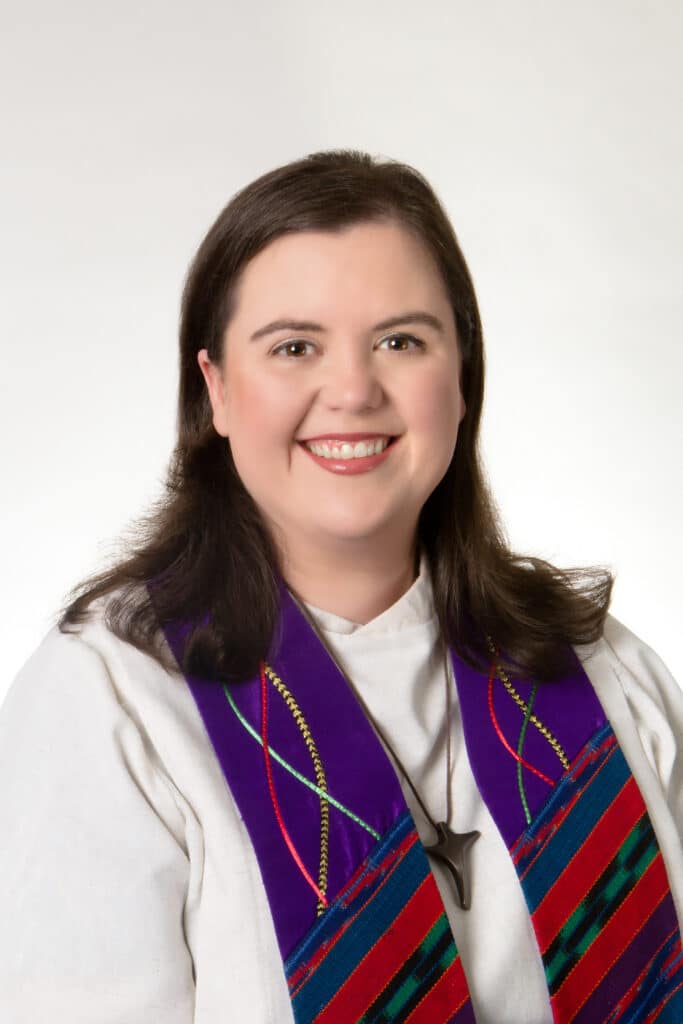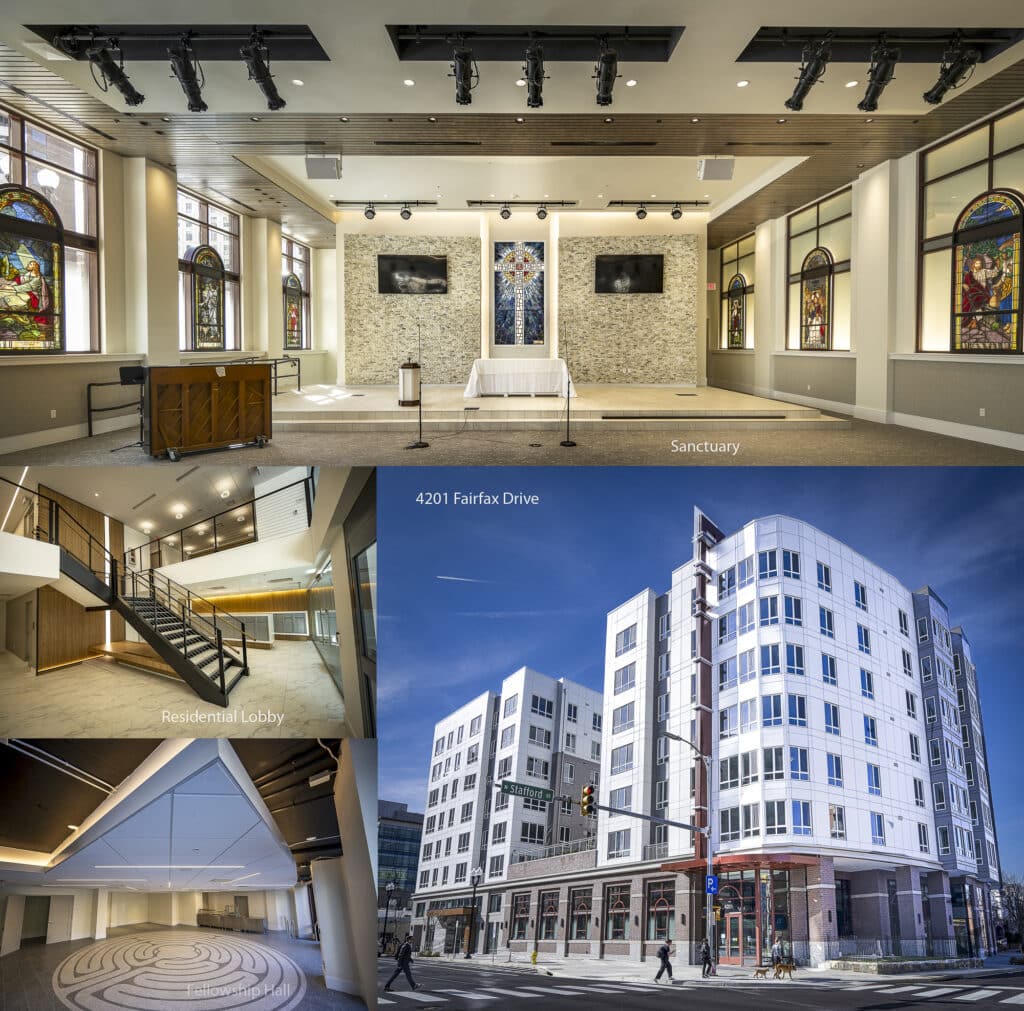Enterprise’s Faith-Based Development Initiative Tackles Affordable Housing Through Intentional Engagement

By Abram Mamet
10 min read

In recent years, developers have begun to see the many churches, mosques, synagogues and other landholding faith organizations that dot the United States as ideal partners in the struggle to control the affordable housing crisis. Not only are these organizations mission-driven and deeply embedded in their communities, but many also sit on large parcels of underutilized land, explains Reverend David Bowers, Enterprise Community Partners’ vice president for their Mid-Atlantic Market. “You have these neighborhood anchor institutions, which control real estate, and you have these mission-aligned institutions all over the country – red state, blue state, purple state, urban, suburban and rural. And they control this underutilized, underdeveloped asset.”
Unfortunately, these faith-based owners often exist a world apart from developers. Since 2006, however, Enterprise has been working to bridge that gap with its Faith-Based Development Initiative (FBDI). This unique program provides houses of worship with financial and educational tools to convert vacant and underutilized land into affordable homes and neighborhood resources. Bowers—who helped launch the FBDI and currently serves as the initiative’s senior advisor—explains that the foundational philosophy of the program is to leverage “radical common sense” in connecting the mission and landed assets of these faith institutions with the institutional capacity of similarly mission-oriented developers.
The program has already helped houses of worship create or preserve over 1,800 affordable homes, and a recently-announced expansion of the FBDI into multiple Texas cities looks to further that work, bringing the initiative’s projected total pipeline of preserved and constructed homes to 27,000.
To be certain, faith institutions sit on a substantial amount of underutilized land with the collective potential to end the nation’s current affordable housing crisis. For example, in 2019, the Urban Institute found that in the notoriously expensive Washington, DC area, there existed 800 vacant parcels owned by faith-based institutions, which—if used for multifamily affordable housing—could convert to an estimated 43,000 to 108,000 new units. Even considering the lowest end of this estimate, such a building spree could wipe out the shortage of rental homes in the area, which the National Low Income Housing Coalition estimates currently sits at just over 33,000 units.
Bowers says that this staggering opportunity exists countrywide and is an ideal way to make a dent in Americans’ lack of affordable housing. “It’s radical common sense. If you have all this land, much of it underutilized, owned by mission-aligned faith partners, we could have some real impact if we intentionally engage with that community as solution partners in meeting our housing affordability needs.”
That intentional engagement within the FBDI orients the initiative towards four key goals, says Bowers: building new affordable units, supporting equitable procurement opportunities throughout the development continuum, strengthening the faith partners’ positions as neighborhood anchor institutions, and “nurturing a national movement that includes, but is much larger than, Enterprise.”
Though Enterprise does operate a robust owner/operator business in the Mid-Atlantic, Bowers says that the more widespread focus of the FBDI is that Enterprise focuses more on education through the initiative rather than development partnership opportunities. “We see ourselves as a provider of intellectual and financial capital.”
Today’s standard FBDI model operates with two-to-three-year cohorts, where Enterprise provides: a robust curriculum meant to give faith partners the institutional language of development; capital resources and grant opportunities for pre-development expenses, like development consultants, market studies and feasibility analyses; and assistance with crafting a Request for Proposal (RFP) and seeking a joint venture partner. Along the way, Enterprise provides technical assistance—what they call “shepherding support”—and peer-support programs where clergy can connect to discuss their various goals and challenges.

This foundational knowledge is critical, as professional clergy are rarely trained in the complicated art of real estate deals. As Reverend Cliff Beckford of Living Word Church in Washington, DC points out, “for most pastors and houses of worship, housing development is probably the last thing on their top 100 things to do, particularly from an expertise standpoint.” Enterprise’s role is “critical,” Beckford says, in “introducing us to the language of development from A through Z.” Additionally, Beckford, who worked with the FBDI to develop a project called Trinity Plaza on church property says that, unlike banks, investors or other business partners, Enterprise is simply coming in to assist houses of worship to get across the finish line.
Cohort participants don’t pay, says Bowers. Instead, Enterprise raises money “from a range of different public and private sector partners.” This includes Wells Fargo Foundation, the TD Jakes Foundation, Capital One, Truist, Bank of America, JPMorganChase and local jurisdictions, like Washington, DC, Montgomery and Prince George’s Counties in Maryland, and other local private foundations, like Trinity Church Wall Street in New York City and the Arthur Blank Foundation in Atlanta. Across this range are grants and contracts that Enterprise had to apply for.
Another investment from the Wells Fargo Foundation alongside the TD Jakes Foundation has allowed Enterprise to expand the cohort model to Houston, Dallas and San Antonio. This will see Enterprise engaging with 20 congregations across two cohorts, with one ten-member cohort in Houston, and another ten-member cohort made up of congregations across Dallas and San Antonio, intending to create 800 affordable homes, with some rental and some ownership.
Though the application process has closed for these new Texan cohorts, Bowers is hopeful that Enterprise can sustain the momentum and can “continue to raise dollars that will allow us to not only go deeper with our current cohorts but also wider to serve a broader swath of folks, both in Texas and beyond.”
The FBDI can be particularly powerful when applied to organizations serving historically marginalized communities of color in areas that may have undergone historic change to threaten the historic fabric of those neighborhoods. For example, in areas like Washington, DC where formerly Black-majority neighborhoods have undergone acute gentrification and displacement, Bowers says that the FBDI can help to stem the tide of that displacement, providing a foundational anchor to help maintain the vitality of those historic communities. “If we can work with a house of worship to provide affordable housing opportunities there, it can prevent displacement of lower and moderate-income folks who tend to disproportionately be people of color in a lot of these urban areas.”
On the flipside, in many underserved cities, a faith institution might be all that remains in a neighborhood that was once vibrant but, due to various external forces, has become hollowed out and depopulated. Bowers points to the FBDI’s work in Baltimore City, where many neighborhoods are dotted with vacant and abandoned structures. There, the FBDI works with faith organizations to “try to stabilize a community through their strategy of building housing and facilities that will help stabilize these communities that have been distressed.”
Beyond providing housing, work on behalf of faith organizations to leverage underutilized land can serve as critical wealth-building opportunities, so that they can continue to serve as neighborhood anchor institutions for decades to come. Bowers says that in this manner, faith organizations working with the FBDI develop “a sense that it helps to strengthen them organizationally as a byproduct of this work, leveraging their assets depending on the population they’re serving and how they structure the partnership.”
Occasionally, Bowers says that he encounters congregations that want to build this housing to primarily serve the members of their faith community. “We’re always clear from the beginning that this housing is going to be open to all in a community.”

CUMC-Ballston Provides a Model for Creative, Impactful Development
In 2007, Arlington, VA’s Central United Methodist Church (CUMC) realized that there was an entire population just outside their doorstep that they could help to bring out of poverty. What initially started as a mission to serve folks on Friday mornings eventually developed into sustained meetings about how to do more to help those without homes in the densely populated, historically pricy Northern Virginia suburb of Washington, DC.
“This coincided with a building that had begun to crumble after almost a century of use, and the church was ready to think outside the box about how they could meet the needs of the community while also responding to the needs of the building crumbling around them,” explains Reverend Sarah Harrison-McQueen, CUMC’s senior pastor. As that initial exploratory work began, Harrison-McQueen was eventually connected with Bowers and the FBDI team, who provided technical assistance and grant money for feasibility studies. “They were extremely supportive in getting our project off the ground.”
Unfortunately, it took many years before the project took full flight, as the realities of operating as a newcomer to the low-income housing industry began to set in. CUMC initially applied for an ambitious nine percent Low Income Housing Tax Credit deal that would allow the project to be developed by one firm and then managed by the church via a nonprofit they would set up solely to administer the housing; this initial application was ultimately rejected. After a subsequently unsuccessful hybrid nine/four percent application, CUMC approached a different nonprofit developer who would own and operate the newly built affordable housing. This eventually was successful, and the developer—True Ground Housing Partners (formerly the Arlington Partnership for Affordable Housing)—was able to put together a successful four percent LIHTC application that, along with substantial contributions from the church itself and money from Amazon’s community development wing, made the deal possible.

Harrison-McQueen credits the FBDI’s focus on an aligned mission and sincere drive towards helping the community that allowed the project to ultimately move forward. “We were very grateful for Enterprise helping us early on in the process, but also continuing when we hit that major roadblock.”
Harrison-McQueen says that the FBDI’s educational resources provided her personally with a strong foundation for intense work that she formerly had no training in. Initially, navigating the complex development process “was like drinking from a fire hose,” says Harrison-McQueen. “I had no experience whatsoever with this. I have a Master’s of Divinity, and they do not cover this in seminary.”
For example, even the basic step of launching a Community Development Corporation, which would allow the church to set itself up to work with a partner to develop the land, was a critical component of FBDI’s early educational model. “In Virginia, in the United Methodist Church, we are in the minority of churches who are even incorporated,” says Harrison-McQueen. “The vast majority of United Methodist churches in our Commonwealth don’t incorporate. So even walking through that process required a level of knowledge of, for example, realizing we have to register every year with the state, as opposed to registering our trustees with the county, which is what every other United Methodist Church does. So that kind of level of not knowing what you don’t know, Enterprise came in with the ability to say, ‘Okay, here’s what you as a congregation need to know.’”
Eventually, through the FBDI process, CUMC was able to construct a 144-unit building serving 30 to 60 percent area median income households within a building that also housed the church’s sanctuary, a 100-child preschool and the church’s kitchen, which continues to serve meals to the hungry weekly.
One valuable lesson that Harrison-McQueen took from the process is the importance of connecting with neighbors early and often. Learning from an area Baptist church that went through a similar land conversion, Harrison-McQueen from the beginning went to “a lot of the community meetings, making presentations and talking with people.” After resistance from the church’s immediate neighbors, Harrison-McQueen says, “Someone said to me, I don’t like it, but I do see the value of it, and I accept that it’s just going to have to be there. And so that was the best I could have hoped for.”